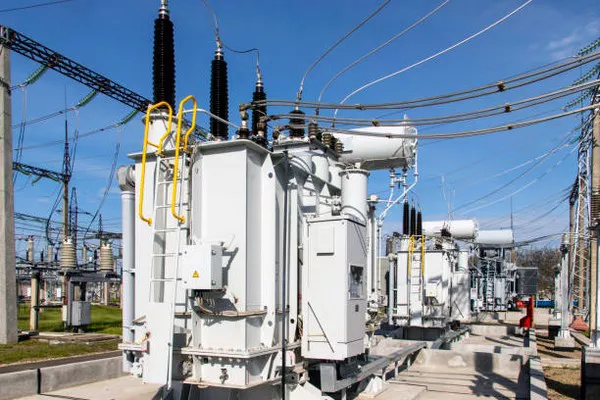In the realm of electrical engineering, the demand for efficient and reliable power distribution systems has led to the development and utilization of various transformers designed to meet specific requirements. One such transformer that plays a crucial role in voltage regulation and power management is the buck-boost transformer. In this article, we will delve into the fundamental aspects of buck-boost transformers, exploring their functionality, applications, and the indispensable role they play in diverse electrical systems.
Defining the Buck-Boost Transformer:
A buck-boost transformer is a versatile and indispensable electrical device designed to provide voltage regulation and adaptation in power distribution systems. Unlike traditional transformers, which are primarily used to step up or step down voltage, a buck-boost transformer has the unique capability to either decrease (buck) or increase (boost) the voltage levels. This flexibility makes it an invaluable component in various applications, allowing engineers to fine-tune and optimize voltage levels as per the specific requirements of the electrical system.
Key Components and Working Principle:
The core design of a buck-boost transformer includes two separate windings, the primary and secondary, each with multiple taps. These taps allow for the adjustment of the transformer’s turns ratio, enabling precise control over the output voltage. The winding configuration of a buck-boost transformer facilitates its dual functionality – boosting voltage when connected in one manner and bucking voltage when connected differently.
When the transformer is wired to boost voltage, the primary winding is connected in series with the secondary winding. This results in an additive effect, increasing the overall voltage output. Conversely, when configured to buck voltage, the primary winding is connected in series opposition to the secondary winding, leading to a subtractive effect, effectively lowering the output voltage.
Applications of Buck-Boost Transformers:
Voltage Regulation in Industrial Settings:
Buck-boost transformers find extensive use in industrial environments where voltage fluctuations can adversely affect sensitive equipment. These transformers are employed to regulate voltage levels, ensuring a stable and consistent power supply to critical machinery and electronic devices.
HVAC Systems:
Heating, ventilation, and air conditioning (HVAC) systems often require precise voltage adjustments to maintain optimal performance. Buck-boost transformers are integrated into HVAC units to ensure that the equipment operates within the specified voltage range, enhancing efficiency and longevity.
Outdoor Lighting and Landscaping:
In outdoor lighting applications, such as streetlights and landscape illumination, buck-boost transformers play a vital role in adjusting voltage levels to accommodate variations in the electrical grid. This ensures that the lighting systems remain bright and operational, contributing to enhanced safety and aesthetics.
Telecommunication Infrastructure:
Telecommunication networks demand stable and well-regulated power supplies to maintain uninterrupted connectivity. Buck-boost transformers are installed to counteract voltage fluctuations, safeguarding critical equipment and minimizing downtime in the telecommunications sector.
Renewable Energy Systems:
Buck-boost transformers play a pivotal role in renewable energy installations, particularly with solar panels. These transformers help manage voltage levels, ensuring efficient power transfer from solar arrays to the grid or energy storage systems.
Isolation and Grounding:
In certain applications, buck-boost transformers are utilized for isolation and grounding purposes. They help mitigate the risk of electrical faults and ensure a safer operating environment by controlling voltage levels and minimizing the potential for equipment damage or electrical hazards.
Benefits of Buck-Boost Transformers:
Versatility and Adaptability:
The primary advantage of buck-boost transformers lies in their versatility and adaptability. Their ability to both boost and buck voltage makes them suitable for a wide range of applications, providing engineers with a flexible solution to address diverse voltage requirements.
Space-Efficient Design:
Buck-boost transformers are often more compact than traditional transformers, making them suitable for installations where space is limited. Their smaller footprint allows for easier integration into existing electrical systems without significant modifications.
Cost-Effective Voltage Regulation:
As compared to alternative solutions for voltage regulation, buck-boost transformers offer a cost-effective and efficient means of achieving precise voltage control. This makes them a preferred choice for applications where budget constraints are a consideration.
Improved Power Quality:
By stabilizing voltage levels, buck-boost transformers contribute to enhanced power quality. This is particularly important in environments where sensitive electronic equipment is utilized, as fluctuations in voltage can lead to malfunctions or premature equipment failure.
See Also When To Replace Silica Gel In Transformer
Conclusion:
In the ever-evolving landscape of electrical engineering, the buck-boost transformer stands out as a reliable and adaptable solution for voltage regulation. Its dual functionality, space-efficient design, and cost-effectiveness make it a preferred choice in a multitude of applications ranging from industrial settings to renewable energy installations. As technology continues to advance, the role of buck-boost transformers is likely to expand, contributing to the efficiency and reliability of power distribution systems across various sectors. As engineers and industry professionals embrace the versatility of buck-boost transformers, they pave the way for a more resilient and optimized electrical infrastructure.

